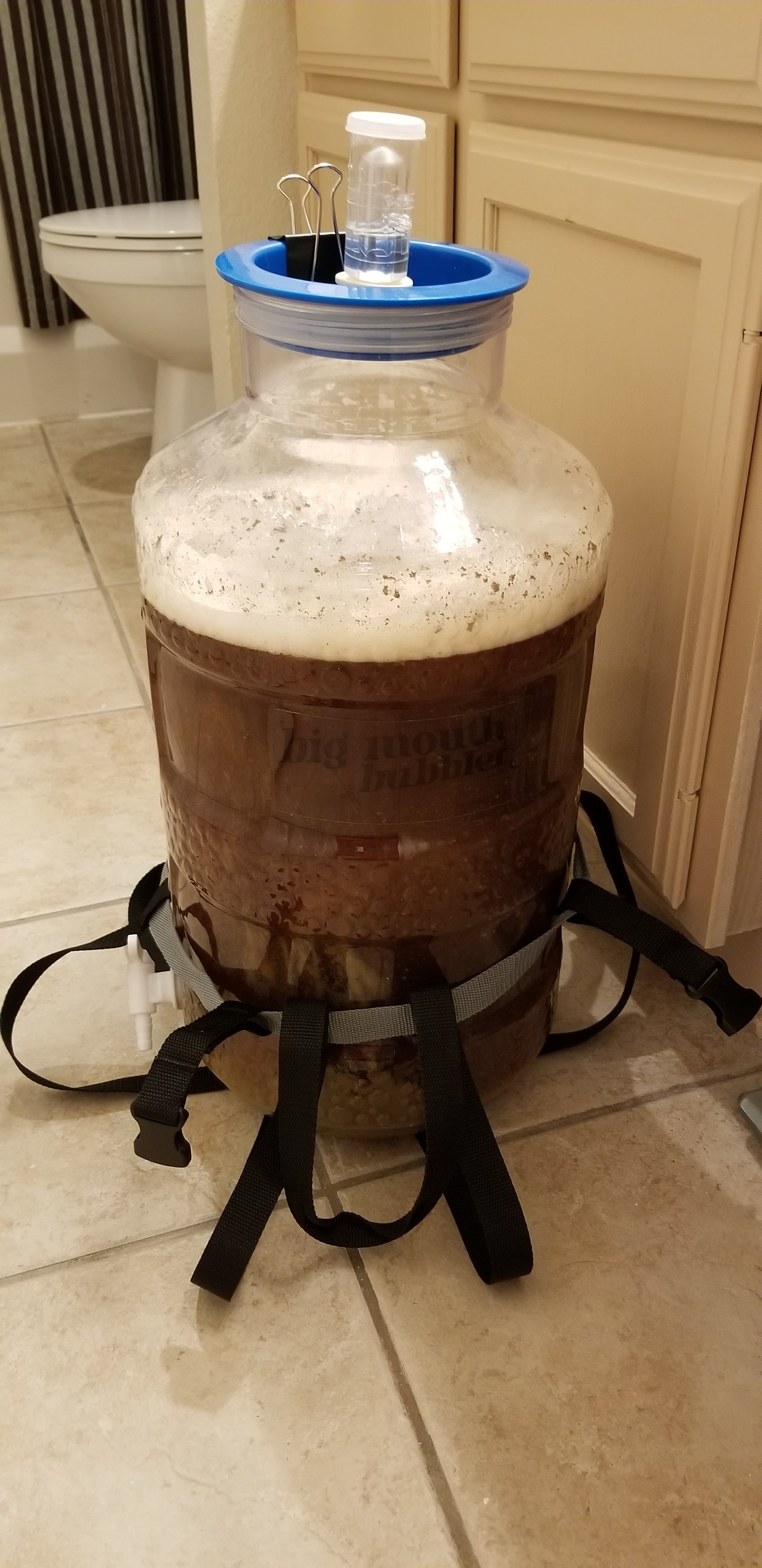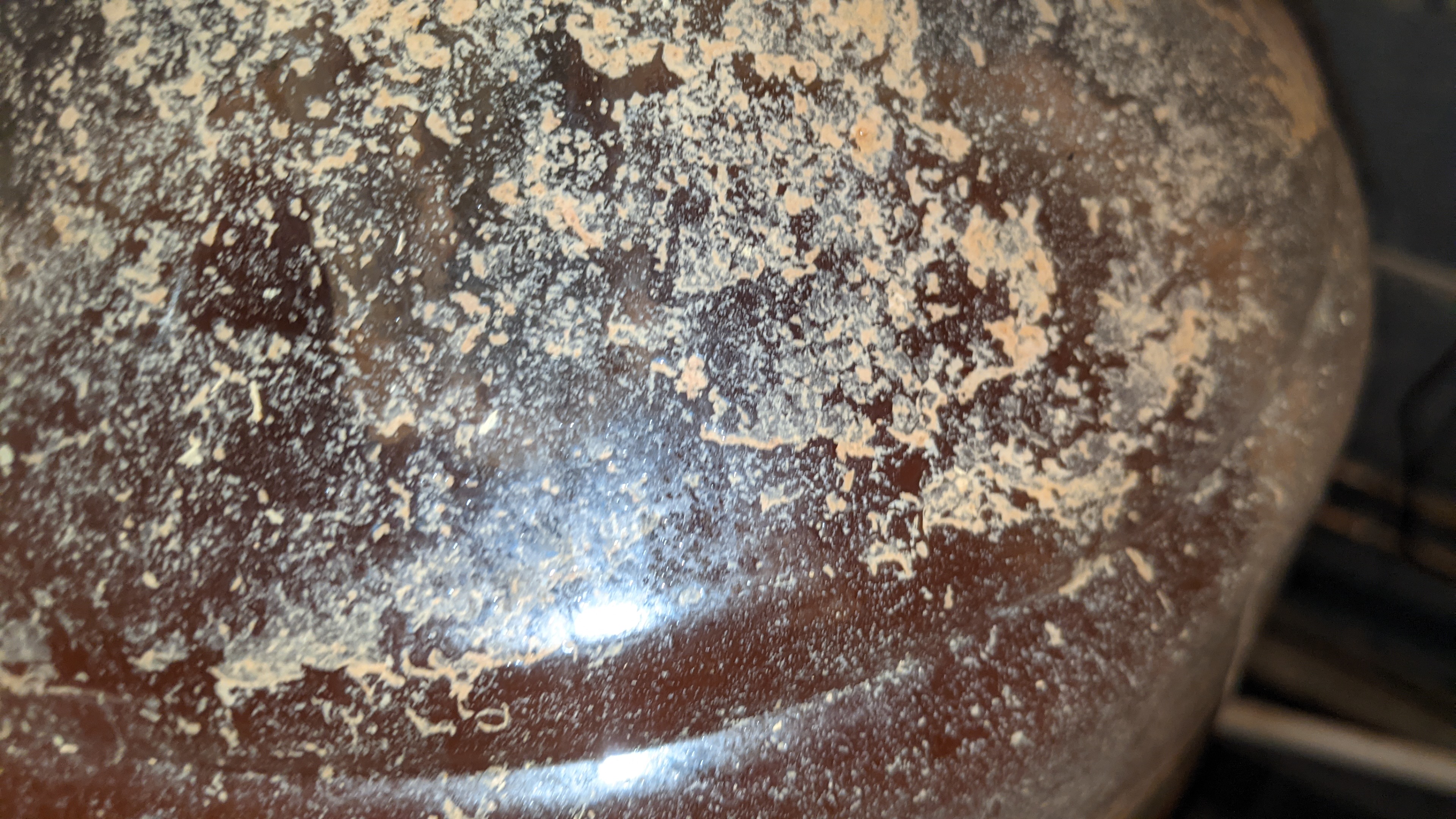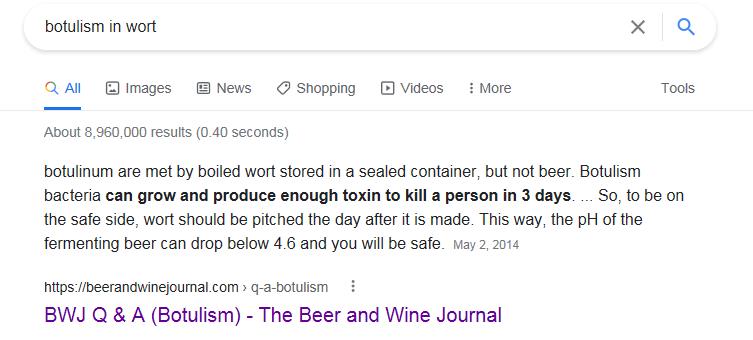I bet there was some diasticus strain lingering around your fermenter, let us know how it tastes and go from there. 



I concur…. Let it ferment out and condition, and then taste it. If it tastes bad, all you’ve lost is some more time and effort. BUT, you could end up with a very tasty “happy accident”I bet there was some diasticus strain lingering around your fermenter, let us know how it tastes and go from there.
I'm not ordering anybody.. "dude"... The OP asked for our thoughts. My kid is an MD, would you like me to get a professional opinion why you shouldn't drink a bunch of wort that's been mysteriously fermenting or spoiling over the weekend by itself at 100F degrees?Yeah but, there are several users here who do have those qualifications, and I've never seen anything like what you're suggesting coming out of them.
And dude, stop ordering people to dump beers based on your own irrational fears and paranoia.
Honestly I forgot the 100 degree fermentation temp. That is an oddly high temp. Some weird things might be happening. But there are however a handful of professional craft breweries in my area, and many throughout history dating back to pre-hopped beers, who do wild fermentation. It is a very hard task to accomplish, but it can be done. Personally I would honestly stick to preselected lab grown bacteria cultures until I can get a microscope.I'm not ordering anybody.. "dude"... The OP asked for our thoughts. My kid is an MD, would you like me to get a professional opinion why you shouldn't drink a bunch of wort that's been mysteriously fermenting or spoiling over the weekend by itself at 100F degrees?
Use best practices... you are speaking to a lot of people worldwide on this forum with varying levels of skill, education, training, experience. You tell them all to drink this stuff and some will get sick.











...what kind of fermentor do you use and what type of yeast was used for the last batch?
...prior to pitching the Voss, how did it smell?
I brewed on Saturday. 5.5 gallons of wort into fermenter at about 5pm. I sent my temp controller to 100F because I cooled it too far and needed to get the temp back up for the Lallemand Voss kviek I am using. But then a family emergency came up before I could pitch the yeast. I just got home on Monday 9am and checked on my fermenter.
I found a pretty high krausen, lots of bubble activity, and debris in the blowoff tubing.
Does that sound like it picked up a wild yeast that took off? Or maybe some kind of infection?
Thoughts?




It was a new FerMonster fermenter, so not prior yeast.
When I first opened it, it just smelled like wort. I didn't notice any unexpected odors.
so it smelled like sweet wort and no fermentation like aromas?
Did you check the gravity before pitching the Voss?
With voss you should be about done so you wont have to wait long to taste it if you feel adventurous(or brave).
Okay, some good news. So far, it just looks like beer. It was hard to get a pic of the surface through the krausen ring but I didn't see anything growing across it.
Activity is very low now. But that's normal for kviek, I hear. Hard and fast active fermentation.
No, I wish I had thought checking the gravity again before pitching the Voss. But yes, it is almost done. Activity has dropped way off to just a of bubble / second, krausen has fallen, yeast cake formed.
Yes please do. And ask him to be specific. On second thought, nevermind. Brewing science is its own profession and even a fully qualified MD might be clueless.I'm not ordering anybody.. "dude"... The OP asked for our thoughts. My kid is an MD, would you like me to get a professional opinion why you shouldn't drink a bunch of wort that's been mysteriously fermenting or spoiling over the weekend by itself at 100F degrees?
Use best practices... you are speaking to a lot of people worldwide on this forum with varying levels of skill, education, training, experience. You tell them all to drink this stuff and some will get sick.
Clostridium Botulinum is an anaerobic bacterium requiring an anoxic environment to reproduce. A fermenter under typical conditions does not provide that environment. Home canning=perilous; home brewing=harmless.Ok, I googled to see what temp C. botulinum thrives at, and yes, 100F is within the range. However, the acidity of the wort would be close to the tolerance level. Then there are other factors in brewing that I don't think a quick google search will tell me. Hops being one of them. Potentially, the alcohol level at this point being another. Also, I don't know how long it takes for C. botulinum to produce toxins, but what I've read, it mostly happens when something isn't properly canned and has been stored for some amount of time. The wort in question is fresh, so I don't think that it's had time to produce toxins.
Sounds like your sanitation practices are lacking.Roughly the same thing happened to me. Spent seven hours Saturday brewing a saison, didn't get around to pitching the yeast until Monday afternoon. Arrived home Monday to pitch my starter to this:
View attachment 736233
I dumped it because it reeked of mushrooms growing on wet dogfood. I have no time or desire to find out what innoculated while I wasn't looking. I'm going to Iodophor the whole set up before I reuse it.
Just want to add, maybe you could have 'iodophor'd' the whole set up before racking fresh wort into it and avoided the whole mess? Not trying to be judgy, but 60+ batches here without a single infection, and I suspect some lax sanitation practices.Roughly the same thing happened to me. Spent seven hours Saturday brewing a saison, didn't get around to pitching the yeast until Monday afternoon. Arrived home Monday to pitch my starter to this:
View attachment 736233
I dumped it because it reeked of mushrooms growing on wet dogfood. I have no time or desire to find out what innoculated while I wasn't looking. I'm going to Iodophor the whole set up before I reuse it.
You’re opinion becomes important once you get a PhD, where is Chris White at?Just want to add, maybe you could have 'iodophor'd' the whole set up before racking fresh wort into it and avoided the whole mess? Not trying to be judgy, but 60+ batches here without a single infection, and I suspect some lax sanitation practices.
Well, that was concise.But could still be good, but be cautious
If it goes below the terminal gravity, it’s a contamination of a bacteria culture.
Alright Einstein, here is an article from the Beer & Wine Journal that botulism can build up to lethal after 3 days. Here is the article:A general consensus doesn't create truth, it merely reflects it. That microorganisms dangerous to humans cannot reproduce in beer is widely accepted as fact.

Crazy. If I didn't know the whole story I'd say that looks like a perfectly normal fermentation. My money is on some kind yeast that went nuts with the high temperature.Okay, some good news. So far, it just looks like beer. It was hard to get a pic of the surface through the krausen ring but I didn't see anything growing across it.
Activity is very low now. But that's normal for kviek, I hear. Hard and fast active fermentation.
View attachment 736235View attachment 736236View attachment 736234
Do you or anyone you know have a ph meter?
Well I "StarSan'd" the entire set up before pumping the wort in. I did exactly nothing different than I've done countless times before. This is my first infection in 10+ years of brewing.Just want to add, maybe you could have 'iodophor'd' the whole set up before racking fresh wort into it and avoided the whole mess? Not trying to be judgy, but 60+ batches here without a single infection, and I suspect some lax sanitation practices.